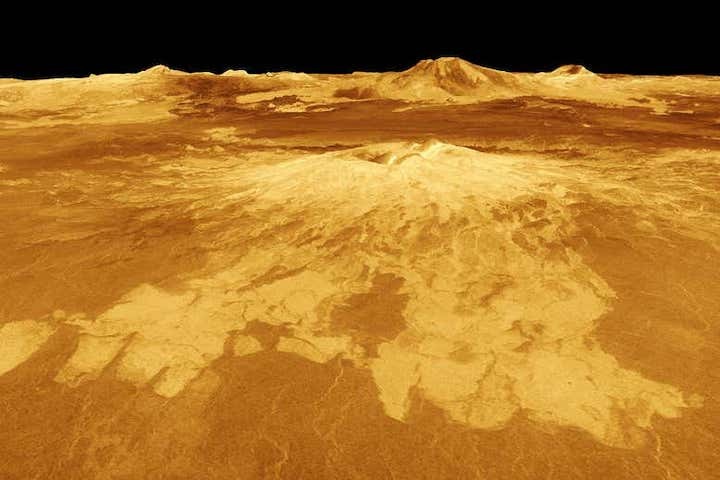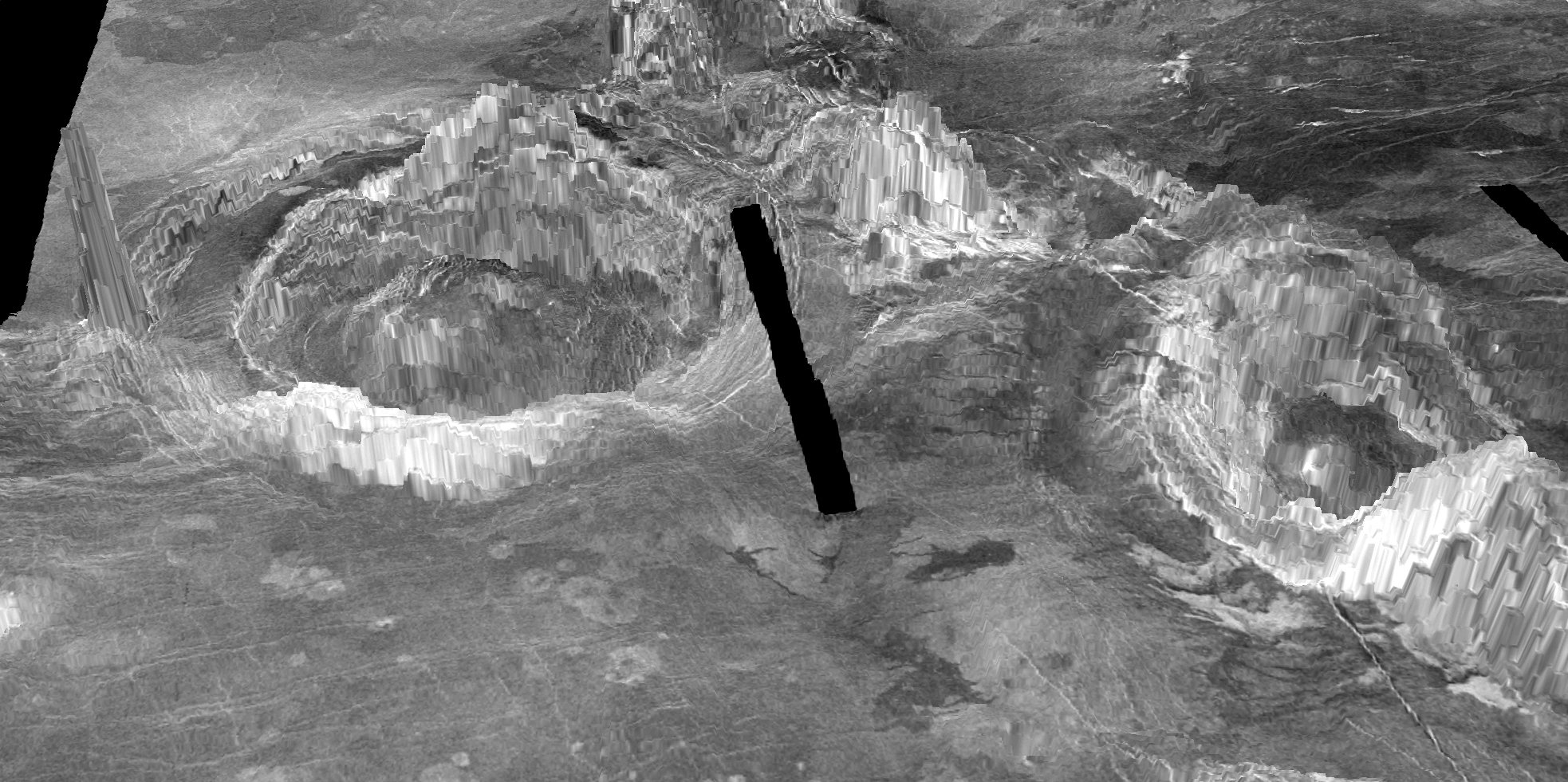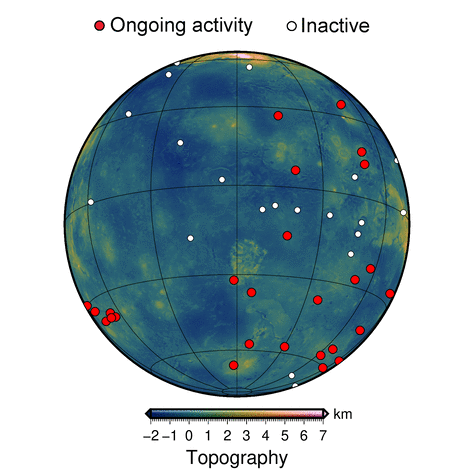21.07.2020

NASA/JPL
Several dozen active volcanic sites have been identified on Venus for the first time. The discovery may aid future missions to the planet and add to our understanding of why there is life on Earth, but not Venus.
Anna Gülcher at the Swiss Federal Institute of Technology in Zurich, Switzerland, and her colleagues created high-resolution simulations of how volcanic sites on Venus could form, based on our understanding of the planet’s interior using data from the European Space Agency’s Venus Express mission, which ended in 2014. They then looked at infrared images from NASA’s Magellan mission to Venus in the early 1990s to see if the images matched their simulations.
“People have suggested that Venus is volcanically active before,” says Gülcher, meaning it has volcanoes that have erupted in the last million years or so. “What we have done that is new is to map out these regions and correlate them to these specific sites.”
The simulations allowed the researchers to identify what features a currently active volcanic site would possess. Most notably, they looked for a trench around a site’s outer ring and a bulge on the trench’s edge.
Looking at the Magellan images, they found that at least 37 volcanic sites had these features, suggesting they are active. The volcanic sites, called coronae, are much larger than Earth’s volcanoes. The average corona that the researchers looked at had a diameter of 300 kilometres. Mauna Loa in Hawaii, the largest active volcano on Earth, is only 120 kilometres wide.
The researchers also found that most of these sites were in a belt around the planet, which they have dubbed the Ring of Fire. Gülcher hopes that future missions to Venus will focus on this region in order to learn more about the planet’s geology.
“Based on size, chemistry and position in the solar system, Venus is the most Earth-like planet ever observed,” says Sami Mikhail at the University of St Andrews, UK. “Understanding whether or not the planet is volcanically active today is an integral piece of the puzzle to revealing why Earth is the definition of habitable, and Venus is a barren, hot and hellish wasteland.”
Scientists Discover Volcanoes on Venus Are Still Active
New 3D model provides evidence that Venus is churning inside
A new study identified 37 recently active volcanic structures on Venus. The study provides some of the best evidence yet that Venus is still a geologically active planet. A research paper on the work, which was conducted by researchers at the University of Maryland and the Institute of Geophysics at ETH Zurich, Switzerland, was published in the journal Nature Geoscience on July 20, 2020.
“This is the first time we are able to point to specific structures and say ‘Look, this is not an ancient volcano but one that is active today, dormant perhaps, but not dead,’” said Laurent Montési, a professor of geology at UMD and co-author of the research paper. “This study significantly changes the view of Venus from a mostly inactive planet to one whose interior is still churning and can feed many active volcanoes.”
Scientists have known for some time that Venus has a younger surface than planets like Mars and Mercury, which have cold interiors. Evidence of a warm interior and geologic activity dots the surface of the planet in the form of ring-like structures known as coronae, which form when plumes of hot material deep inside the planet rise through the mantle layer and crust. This is similar to the way mantle plumes formed the volcanic Hawaiian Islands.
But it was thought that the coronae on Venus were probably signs of ancient activity, and that Venus had cooled enough to slow geological activity in the planet’s interior and harden the crust so much that any warm material from deep inside would not be able to puncture through. In addition, the exact processes by which mantle plumes formed coronae on Venus and the reasons for variation among coronae have been matters for debate.
In the new study, the researchers used numerical models of thermo-mechanic activity beneath the surface of Venus to create high-resolution, 3D simulations of coronae formation. Their simulations provide a more detailed view of the process than ever before.
The results helped Montési and his colleagues identify features that are present only in recently active coronae. The team was then able to match those features to those observed on the surface of Venus, revealing that some of the variation in coronae across the planet represents different stages of geological development. The study provides the first evidence that coronae on Venus are still evolving, indicating that the interior of the planet is still churning.
“The improved degree of realism in these models over previous studies makes it possible to identify several stages in corona evolution and define diagnostic geological features present only at currently active coronae,” Montési said. “We are able to tell that at least 37 coronae have been very recently active.”
The active coronae on Venus are clustered in a handful of locations, which suggests areas where the planet is most active, providing clues to the workings of the planet’s interior. These results may help identify target areas where geologic instruments should be placed on future missions to Venus, such as Europe’s EnVision that is scheduled to launch in 2032.
Quelle: University of Maryland


